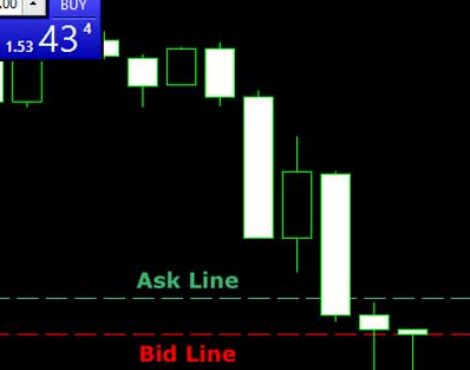The foreign exchange market, also known as the Forex market, is the largest and most liquid financial market in the world. Traders participate in this market to speculate on the exchange rates between different currencies. Interest rates play a crucial role in determining these exchange rates, making them a key factor to consider for forex traders. Understanding how interest rates affect currency values and market dynamics can help traders navigate the complexities of the Forex market with greater insight and confidence.
Understanding the Relationship Between Interest Rates and Forex Markets

Interest rates are set by central banks and influence the cost of borrowing, lending, and investing in a country’s currency. Higher interest rates tend to attract foreign investment as they offer better returns on investments denominated in that currency. This increased demand for the currency can lead to its appreciation in the Forex market. Conversely, lower interest rates can drive investors away, leading to a depreciation of the currency. The relationship between interest rates and currency values is a fundamental principle in Forex trading.
Factors Influencing Foreign Exchange Rates: Interest Rate Decisions

Central banks make decisions on interest rates based on various economic factors such as inflation, economic growth, employment levels, and monetary policy goals. Changes in interest rates can signal the central bank’s stance on addressing these factors, influencing market expectations and driving currency movements. Traders closely monitor interest rate decisions and statements from central banks to anticipate future policy changes and their potential impact on currency values.
How Central Bank Interest Rate Policies Affect Currency Trading

Central banks play a significant role in shaping the Forex market through their interest rate policies. A hawkish stance, where a central bank signals a willingness to raise interest rates to combat inflation, can strengthen a currency. Conversely, a dovish stance, where a central bank indicates a willingness to lower rates to stimulate economic growth, can weaken a currency. The communication and actions of central banks can create volatility in the Forex market as traders react to changing policy signals.
Analyzing Market Reactions to Interest Rate Announcements

Interest rate announcements by central banks are highly anticipated events in the Forex market as they can trigger significant price movements. Traders analyze the accompanying statements and economic projections to gauge the central bank’s outlook on the economy and future policy actions. Market reactions to interest rate decisions can be swift and dramatic, with currencies responding to changes in expectations and sentiment. Traders need to stay informed and adaptable to capitalize on these opportunities.
The Role of Interest Rate Differentials in Forex Trading Strategies

Interest rate differentials between countries can impact exchange rates and create opportunities for Forex traders. By trading currency pairs with diverging interest rates, traders can potentially profit from the interest rate spread while speculating on currency movements. Carry trades, which involve buying a high-yielding currency and selling a low-yielding currency, are popular strategies based on interest rate differentials. Understanding and monitoring these differentials is essential for developing successful Forex trading strategies.
Navigating Volatility in Forex Markets Due to Interest Rate Fluctuations

Interest rate fluctuations can introduce volatility and uncertainty into the Forex market, presenting both risks and opportunities for traders. Sharp movements in currency values following interest rate announcements or economic data releases can challenge traders’ risk management and trading strategies. By staying informed, managing leverage effectively, and adapting to changing market conditions, traders can navigate volatility and capitalize on potential trading opportunities. Traders should be prepared for sudden shifts in market sentiment and be ready to adjust their positions accordingly.
Comparison Table: Interest Rate Decisions and Currency Movements
| Central Bank Action | Hawkish Stance | Dovish Stance |
|---|---|---|
| Interest Rate Decision | Raise rates | Lower rates |
| Impact on Currency | Strengthens | Weakens |
| Market Reaction | Bullish | Bearish |
In conclusion, interest rates are a critical factor influencing the dynamics of the Forex market. Central bank decisions and policies on interest rates drive currency movements, creating opportunities for traders to profit from these fluctuations. By understanding the relationship between interest rates and currency values, staying informed about central bank actions, and developing sound trading strategies, traders can navigate the complexities of the Forex market with confidence and success. Stay vigilant, adapt to changing market conditions, and leverage the power of interest rate analysis in your Forex trading endeavors.



